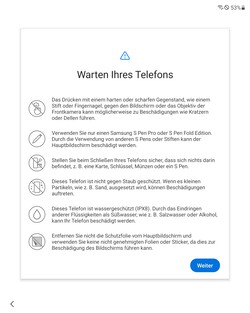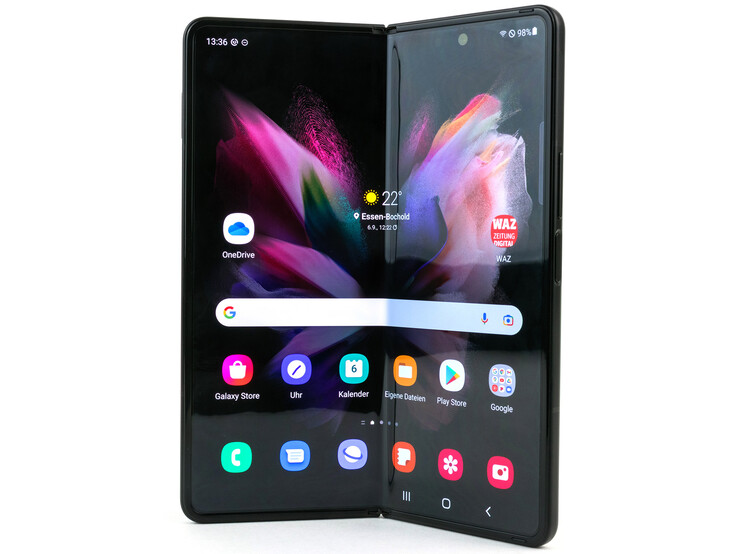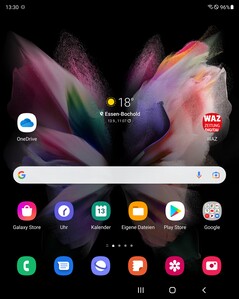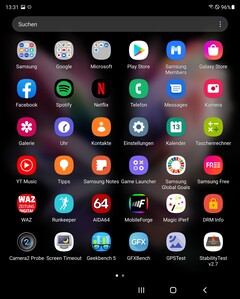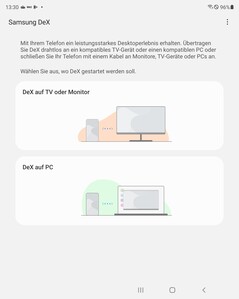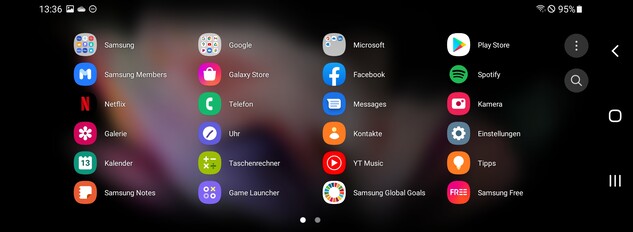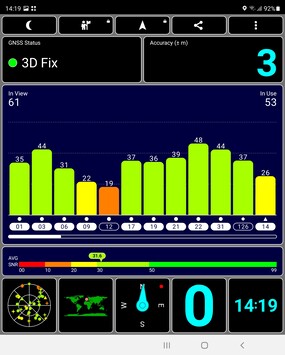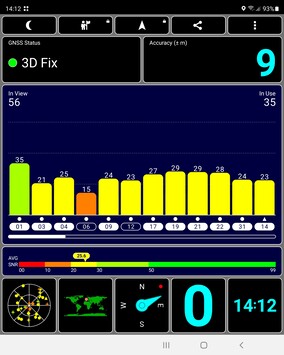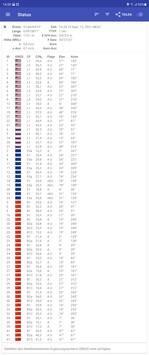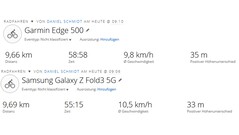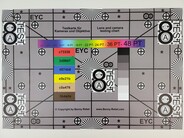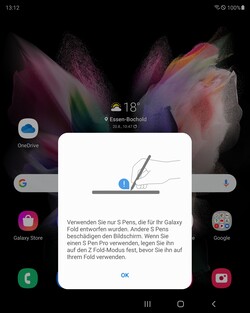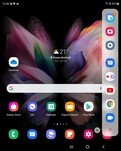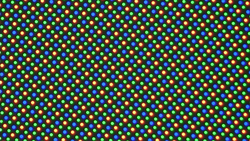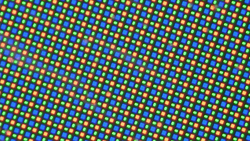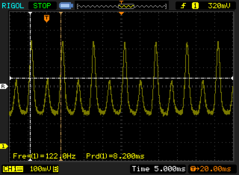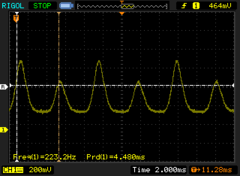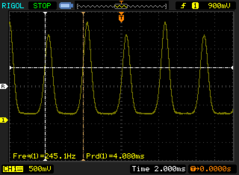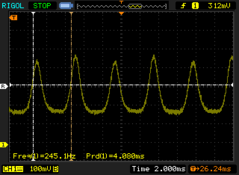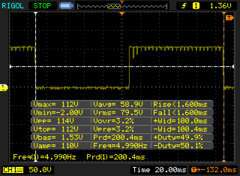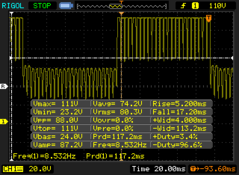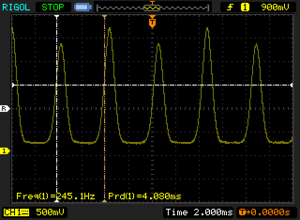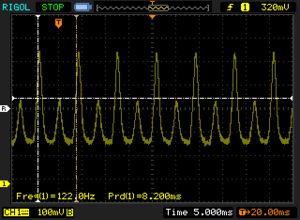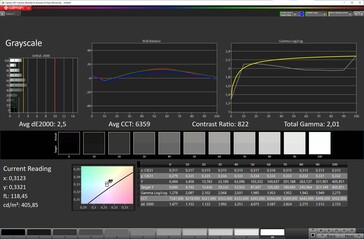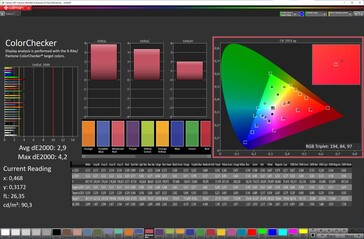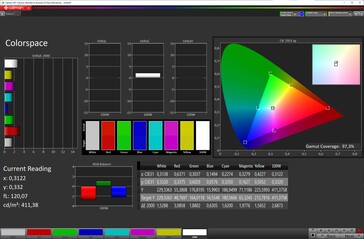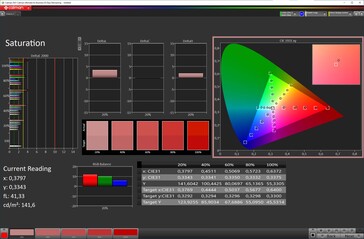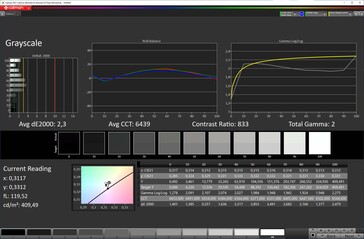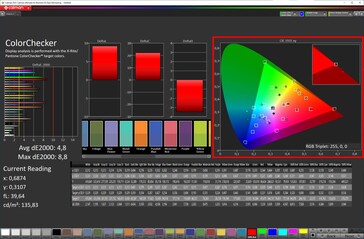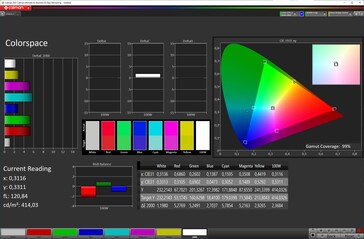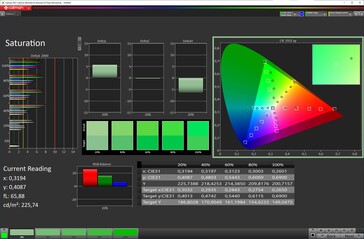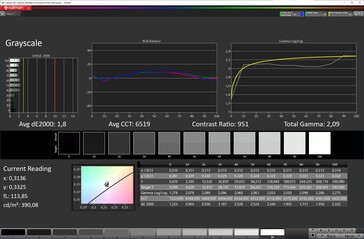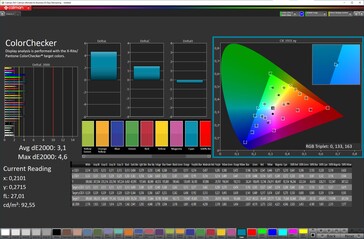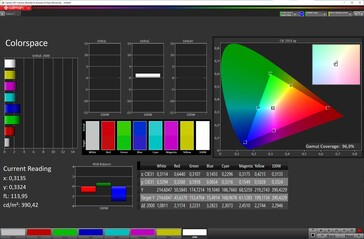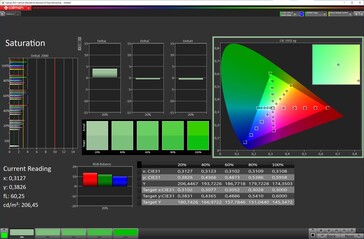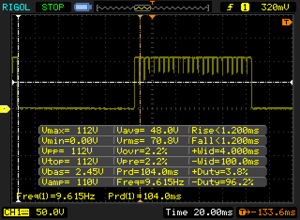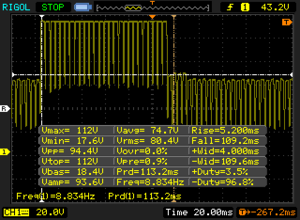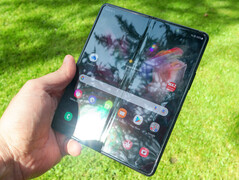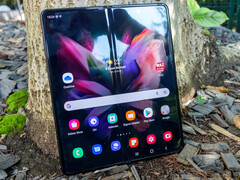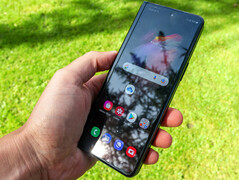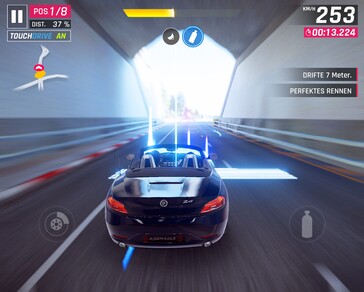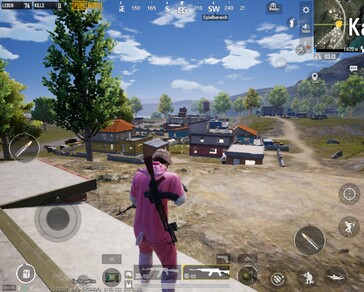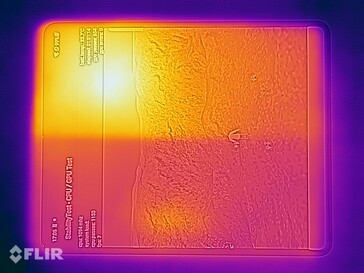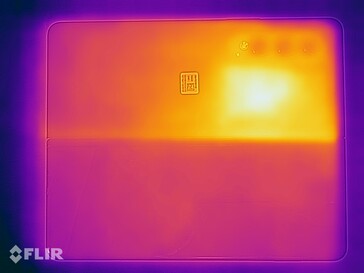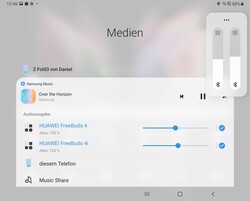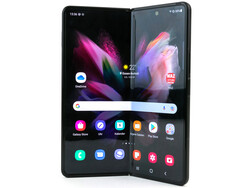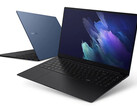Samsung Galaxy Z Fold3 5G review: The unrivaled folding smartphone
After the debut of the Galaxy Z Fold in 2019, Samsung had to put up with a lot of criticism for its first own folding phone. As early as last year, the Fold2 appeared to be more mature, and with the new Fold3, Samsung finally wants to reach a broad audience, which isn't only reflected in the build quality, but in the price as well, since this latest addition has become even more affordable starting at an MSRP of 1,799 Euros (~$1,799).
The concept has remained unchanged. The Galaxy Z Fold3 is very similar to its predecessor in terms of looks, but it's available in more color variants, and it's also a bit lighter and slimmer. In addition to a current high-end SoC, the lower-priced version comes with 256 GB of storage. You'll have to pay an additional $100 if you want to double that.
The Galaxy Z Fold3 no longer has any real competition in its device class, since Huawei's smartphone division has been politically eliminated for the time being. Other manufacturers have yet to introduce similar devices.
Possible contenders in comparison
Rating | Date | Model | Weight | Drive | Size | Resolution | Price |
|---|---|---|---|---|---|---|---|
| 88.9 % v7 (old) | 09 / 2021 | Samsung Galaxy Z Fold3 5G SD 888 5G, Adreno 660 | 271 g | 256 GB UFS 3.1 Flash | 7.60" | 2208x1768 | |
| 87.6 % v7 (old) | 10 / 2020 | Samsung Galaxy Z Fold2 5G SD 865+ (Plus), Adreno 650 | 279 g | 256 GB UFS 3.1 Flash | 7.60" | 2208x1768 | |
| 86.3 % v7 (old) | 09 / 2021 | Samsung Galaxy Z Flip3 5G SD 888 5G, Adreno 660 | 183 g | 128 GB UFS 3.1 Flash | 6.70" | 2640x1080 | |
| 82.6 % v7 (old) | 04 / 2020 | Huawei Mate Xs Kirin 990 5G, Mali-G76 MP16 | 300 g | 512 GB UFS 3.0 Flash | 8.00" | 2480x2200 | |
| 88.7 % v7 (old) | 12 / 2020 | Apple iPhone 12 Pro Max A14, A14 Bionic GPU | 228 g | 128 GB NVMe | 6.70" | 2778x1284 | |
| 89.2 % v7 (old) | 06 / 2021 | Xiaomi Mi 11 Ultra SD 888 5G, Adreno 660 | 234 g | 256 GB UFS 3.1 Flash | 6.81" | 3200x1440 |
Case - A more robust panel and IPX8 for the Fold3
The Samsung Galaxy Z Fold3 5G is a bit lighter and slimmer than its predecessor. When folded, it measures 158.2 x 67.1 x 16 mm (~6.2 x 2.6 x 0.63 in), which makes it comparatively thick, but also quite narrow and very comfortable to hold. When it comes to the height, Samsung specifies the highest point on the hinge side, while the opposing side is flatter at 14.1 millimeters (~0.56 in). This is also where the camera hump is located, which protrudes 2.1 millimeters (~0.08 in) from the case, making this the thickest part of the foldable (16.75 mm/~0.66 in).
The smartphone's IPX8 certification is new, and it indicates that the device is water-resistant. However, it's still not dust-proof, which turns out to be difficult due to the hinge. Opening the smartphone is very easy, and the angle can be adjusted almost without any restrictions. Only the last few millimeters cause the Fold3 to close completely. When closed, the Samsung folding phone leaves a robust impression and is protected by Corning Gorilla Glass Victus on the outside. A protective film has again been applied to the folding display on the inside, and it shouldn't be removed. The corresponding instructions are displayed when the smartphone is set up. Still, the flexible panel leaves a much more stable impression, which can be attributed in part to the fact that the Fold3 is now compatible with the S Pen. The latter's variants have a retractable tip in order to absorb excess pressure applied to the panel. However, we had to exert a surprisingly firm amount of pressure for this to happen in our initial tests (see video below).
Workmanship is very good as well, with gap dimensions being snug and the hinge moving smoothly. We no longer get the feeling of holding a raw egg in our hands, which we had with the first Galaxy Z Fold. Nonetheless, the foldable smartphone should be handled with care, which is why we decided against making stronger twisting attempts or applying more pressure.
The Fold3 5G is available in Phantom Black, Silver, and Green.
Connectivity - The Galaxy Z Fold3 5G comes with UWB but lacks microSD support
The Samsung Galaxy Z Fold3 5G has a fairly comprehensive connectivity, which includes NFC and UWB, in addition to the latest Bluetooth 5.2. The only thing it lacks is the option to expand storage via a microSD card.
The USB 3.2 port (Gen 1) not only provides higher data rates, but it also enables wired image output to HDMI- and DisplayPort-enabled devices. The Samsung DeX desktop mode is also back on board, and can it be displayed on external screens using an appropriate cable or wirelessly via Miracast. However, the latter alternative is much slower and results in lag.
A notification LED is not available; the customizable always-on display handles this task.
Software - Android 11 with long-term updates
The Samsung Galaxy Z Fold3 5G ships with Android 11 and One UI 3.1, and the security patches are at the level of August 1, 2021 at the time of testing and consequently quite up to date. Updates are supposed to arrive on a monthly basis and will be available for three to four years.
As with other Samsung products, third-party apps like Microsoft, Facebook, Netflix, and Spotify are also included alongside the company's in-house apps, but they can now be completely uninstalled if they aren't needed.
Communication and GNSS - Galaxy smartphone with accurate positioning and 5G Sub6
The communication features of the Samsung smartphone are cutting-edge. The only thing you have to do without is 5G with mmWave. The frequency range is broad, so the smartphone can connect to data networks worldwide. The reception quality didn't show any problems in the test.
The Galaxy Z Fold3 also picks up speed when it comes to Wi-Fi networks, and it now supports Wi-Fi 6E with VHT160. In combination with our Netgear Nighthawk AX12 (Wi-Fi 6) reference router, high transfer rates are achieved especially when sending data, and they're also very stable.
The Galaxy Z Fold3 supports all common satellite navigation systems. The satellite signal is obtained quite quickly and accurately outdoors, but it could have been a bit faster indoors.
The Samsung smartphone faces a comparison with the Garmin Edge 500 on our test drive. The Fold3 doesn't show any weaknesses here either, and it tracks the route more accurately than the bike computer.
Telephone and call quality
The Samsung Galaxy Z Fold3 5G can handle up to two SIM profiles at the same time. You can use two nano SIM cards or an eSIM can be used instead of the second card. VoLTE and Wi-Fi calling are also supported.
When held to the ear, the Samsung smartphone's call quality is very good. Even loud ambient noise is suppressed reliably. However, the user of the Fold3 sounds a bit muffled on main streets or in even louder places, but they can still be understood clearly. The speaker function doesn't work as well because the microphone range is very short, and the user can actually only be heard clearly when the device is held in immediate proximity to the mouth.
Cameras - UDC included for the first time in a Samsung phone
For the first time, Samsung has hidden a UD camera (UDC: Under-Display Camera) under the main display, which is meant to provide an uninterrupted view of the whole panel. Samsung uses the same principle as the ZTE Axon 20 (32 MP), but it manages to hide the camera a bit better under the subpixels. In return, it only has 4 MP at its disposal. However, the image quality is acceptable for video calls, but it's better to use the external display's 10 MP lens for selfies. Not only does it have a higher resolution, but it also enables much more detailed pictures, especially in difficult lighting conditions.
The triple-camera setup on the back includes an additional ultra wide-angle lens as well as a 2x optical zoom (maximum digital magnification of 10x). As with the predecessor, all three lenses have a resolution of 12 MP, and both the wide-angle and telephoto lenses can make use of autofocus and optical image stabilization. Nominally, nothing has changed compared to the predecessor, which is a bit of a shame because we would have at least wished for a better ultra wide-angle sensor considering the price. Nevertheless, the main camera takes very good photos.
Videos are recorded in Ultra HD at up to 60 frames per second at best. Compared to the Galaxy S21 Ultra, though, users will have to do without 8K video.
Image comparison
Choose a scene and navigate within the first image. One click changes the position on touchscreens. One click on the zoomed-in image opens the original in a new window. The first image shows the scaled photograph of the test device.
Wide angleWide angleUltra wide-angle5x zoomLow lightWe subject the Galaxy Z Fold3 5G's main camera to further tests under controlled lighting conditions. It also captures our test chart sharply up to the edges, and color gradients are no challenge for the camera.
The Samsung smartphone stands out with a fairly balanced color reproduction in the ColorChecker test. Green tones are the only ones that are a bit off, showing a strong degree of oversaturation.
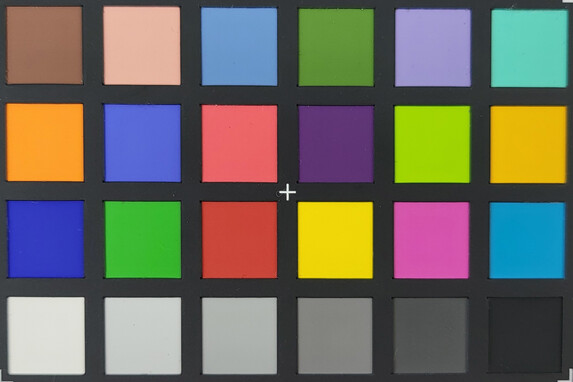
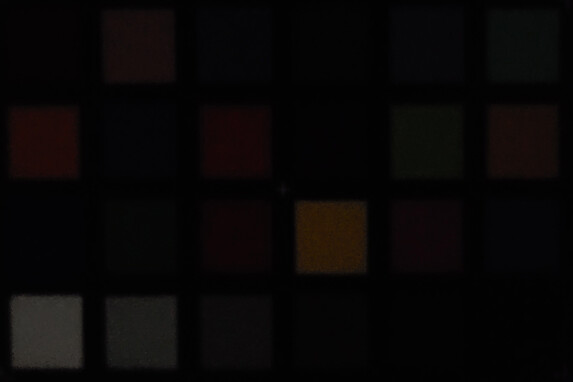
Accessories and warranty - Boxes keep getting slimmer
The box of the Samsung Galaxy Z Fold3 5G is suspiciously slim, and it only contains a SIM tool and a USB-C cable. The power adapter and the AKG headset have been dropped.
Needless to say, Samsung offers suitable accessories in its online store. These include wired or wireless chargers, cases, as well as two different S Pens.
Samsung provides its smartphone with a 24-month warranty, and the Care+ insurance package is also included by default for one year. Although the latter is a nice thing, since it has to be purchased separately for other smartphones, it's also available for two years in those cases. Unfortunately, with the Fold3, an extension is not possible so far.
Input devices and handling - Galaxy Z Fold3 with S Pen support
While the external display is protected by Corning Gorilla Glass Victus, the large main display with the ultra-thin, foldable glass is forced to depend primarily on its film. However, since it's transported in a folded state, this isn't that bad, especially since both touchscreens convince with very good gliding properties and accurate responsiveness. The system is also displayed particularly smoothly thanks to the high refresh rate.
Unfortunately, the support of the S Pen, with which we're familiar from the Galaxy Note20 Ultra in a smaller version and which is now also optionally available for the S21 Ultra, only covers the large main screen, so that the handy function of writing directly on the lock screen unfortunately doesn't work. Two optional variants of the stylus are available for the Fold3: The S Pen Pro and the S Pen Fold Edition. The latter can only be used with the Fold3, while the other has a small toggle and can also be used with the current Galaxy Tab S models and Galaxy Books. With the exception of gestures and remote control functions, all the familiar features are available, and the S Pen provides the usual accurate input on the display. If another S Pen is used, the system will refuse to work with it, displaying the corresponding warning.
The fingerprint sensor is integrated into the multifunctional button on the side, which is easy to reach and allows the smartphone to be unlocked quickly and reliably. Alternatively, two-dimensional face recognition can be used, and it works well in combination with the external front-facing camera, but it takes another try if you use the UDC.
Display - Brighter, faster, better-looking!
The centerpiece of the Samsung Galaxy Z Fold3 5G is the 7.6-inch (19.3 cm) foldable Dynamic AMOLED display. This doesn't sound all that large at first, but it's a considerable 181.8 cm² (~28.2 in²). In comparison, the Galaxy S21 Ultra only has 111.6 cm² (~17.3 in²). Furthermore, the form factor provides an appealing writing surface for all S Pen users. The Galaxy smartphone's panel aims to be even more frugal thanks to further optimizations in AMOLED technology, and indeed, a structure with round instead of angular subpixels can be observed under the microscope.
In terms of brightness, the Fold3 is even brighter than its predecessor, and it achieves an average of around 820 cd/m², which is only slightly below the capabilities of other current high-end smartphones. With a uniform distribution of bright and dark areas (APL50), the brightness even climbs up to 1,059 cd/m² in the center of the display. Without the ambient light sensor enabled, up to 411 cd/m² is possible.
This makes the OLED panel optimally equipped for displaying HDR content, and it also includes the required support for HLG, HDR10, as well as HDR10+. In addition, the display works with an adaptive refresh rate of up to 120 Hz. The system can lower this down to 10 Hz depending on the content being displayed.
The UD camera blends well with the display most of the time; it's only very visible against black and white backgrounds. Compared with the Axon 20, this is certainly an improvement, but ZTE does an even better job in the latter's successor, the Axon 30 5G.
Like all OLEDs, the one in the Fold3 also flickers, but Samsung has come up with something here to protect users' eyes. At minimum brightness, the display automatically switches to DC dimming mode, which allows it to work at a fairly constant 120 Hz. The amplitude curve only becomes more erratic at higher brightness levels. An adaptive eye comfort mode is also available.
The external display is even brighter
The smaller 6.2-inch Dynamic AMOLED panel is found on the outside, and it's very narrow with an aspect ratio of 24.53:9; it uses an enhanced HD Plus resolution (2268x832 pixels), but it still offers a high pixel density (387 PPI).
The external display is actually even brighter and in fact the brightest of its kind among those that we've tested so far, reaching an average of around 925 cd/m² with a pure white background, and even 1,303 cd/m² in the APL50 test. Like the larger panel, it supports HDR and works with a refresh rate of up to 120 Hz.
Once again, differences are apparent when it comes to PWM control. Here, the 6.2-inch display works with a frequency of 235.8 to 245.1 Hz across the entire brightness range. Although this isn't particularly high, the amplitude curve is quite flat.
| |||||||||||||||||||||||||
Brightness Distribution: 97 %
Center on Battery: 808 cd/m²
Contrast: ∞:1 (Black: 0 cd/m²)
ΔE ColorChecker Calman: 2.9 | ∀{0.5-29.43 Ø4.78}
ΔE Greyscale Calman: 2.5 | ∀{0.09-98 Ø5}
97.3% sRGB (Calman 2D)
Gamma: 2.01
CCT: 6359 K
| |||||||||||||||||||||||||
Brightness Distribution: 97 %
Center on Battery: 918 cd/m²
Contrast: ∞:1 (Black: 0 cd/m²)
ΔE ColorChecker Calman: 3.1 | ∀{0.5-29.43 Ø4.78}
ΔE Greyscale Calman: 1.8 | ∀{0.09-98 Ø5}
96.9% sRGB (Calman 2D)
Gamma: 2.09
CCT: 6519 K
| Samsung Galaxy Z Fold3 5G Dynamic AMOLED, 2208x1768, 7.6" | Samsung Galaxy Z Fold2 5G AMOLED, 2208x1768, 7.6" | Samsung Galaxy Z Flip3 5G AMOLED, 2640x1080, 6.7" | Huawei Mate Xs OLED, 2480x2200, 8" | Apple iPhone 12 Pro Max OLED, 2778x1284, 6.7" | Xiaomi Mi 11 Ultra AMOLED, 3200x1440, 6.8" | |
|---|---|---|---|---|---|---|
| Screen | -2% | 18% | -25% | 26% | 19% | |
| Brightness middle (cd/m²) | 808 | 637 -21% | 832 3% | 417 -48% | 855 6% | 891 10% |
| Brightness (cd/m²) | 820 | 635 -23% | 842 3% | 418 -49% | 857 5% | 888 8% |
| Brightness Distribution (%) | 97 | 96 -1% | 97 0% | 99 2% | 98 1% | 99 2% |
| Black Level * (cd/m²) | ||||||
| Colorchecker dE 2000 * | 2.9 | 2.25 22% | 1.9 34% | 2.6 10% | 1.1 62% | 1.9 34% |
| Colorchecker dE 2000 max. * | 4.2 | 4.12 2% | 3.3 21% | 7.7 -83% | 2.51 40% | 3.7 12% |
| Greyscale dE 2000 * | 2.5 | 2.2 12% | 1.4 44% | 2 20% | 1.4 44% | 1.3 48% |
| Gamma | 2.01 109% | 2.17 101% | 2.1 105% | 2.31 95% | 2.187 101% | 2.3 96% |
| CCT | 6359 102% | 6689 97% | 6453 101% | 6276 104% | 6337 103% | 6527 100% |
* ... smaller is better
Screen Flickering / PWM (Pulse-Width Modulation)
| Screen flickering / PWM detected | 245.1 Hz | ≤ 100 % brightness setting | |
The display backlight flickers at 245.1 Hz (worst case, e.g., utilizing PWM) Flickering detected at a brightness setting of 100 % and below. There should be no flickering or PWM above this brightness setting. The frequency of 245.1 Hz is relatively low, so sensitive users will likely notice flickering and experience eyestrain at the stated brightness setting and below. In comparison: 53 % of all tested devices do not use PWM to dim the display. If PWM was detected, an average of 8118 (minimum: 5 - maximum: 343500) Hz was measured. | |||
We examine the image quality with a spectrophotometer and the CalMAN analysis software. In the default profile "Vivid", the larger DCI-P3 color space is targeted and almost completely covered. The reproduction is a bit cooler in this case, but this can be adjusted in the settings to get a more natural image. In terms of grayscale and white balance, this is actually a bit closer to the ideal than when the "Natural" profile with the smaller sRGB color space is used. However, the latter shows its strengths with a slightly more true-to-life color reproduction, even though both settings are very close to each other. This applies to both displays, although the external panel is still calibrated a bit more accurately than the main display when it comes to grayscales.
If you adjust the settings for one display, you should be aware that they will always apply to both panels, regardless of whether the change is related to the use of the ambient light sensor, to the color reproduction, the refresh rate, or the eye comfort mode.
Display Response Times
| ↔ Response Time Black to White | ||
|---|---|---|
| 2.4 ms ... rise ↗ and fall ↘ combined | ↗ 1.2 ms rise | |
| ↘ 1.2 ms fall | ||
| The screen shows very fast response rates in our tests and should be very well suited for fast-paced gaming. In comparison, all tested devices range from 0.1 (minimum) to 240 (maximum) ms. » 11 % of all devices are better. This means that the measured response time is better than the average of all tested devices (20.2 ms). | ||
| ↔ Response Time 50% Grey to 80% Grey | ||
| 10.4 ms ... rise ↗ and fall ↘ combined | ↗ 5.2 ms rise | |
| ↘ 5.2 ms fall | ||
| The screen shows good response rates in our tests, but may be too slow for competitive gamers. In comparison, all tested devices range from 0.165 (minimum) to 636 (maximum) ms. » 23 % of all devices are better. This means that the measured response time is better than the average of all tested devices (31.6 ms). | ||
Outdoors, the Samsung Galaxy Fold3 5G leaves a very good impression, and it remains legible even in direct sunlight, although the external display shows minor advantages when it comes to reflection properties.
If you don't use the ambient light sensor, you will still get a brightness boost when the sensor is exposed to a correspondingly high amount of light in order to ensure the best possible readability at all times.
Performance - Slowed-down Snapdragon 888
The Samsung Galaxy Z Fold3 5G is powered by the latest Qualcomm Snapdragon 888, which is supported by 12 GB of LPDDR5 RAM. The integrated Adreno 660 is responsible for graphics processing.
We found the benchmarks to be a bit weaker than expected. While the CPU still performs as expected in Geekbench's single-core test, it's 3% below the average when all cores are being used, which is definitely tolerable. The 3DMark benchmark shows that the GPU performance is the biggest problem. Due to the high pixel count, the SoC is put under more strain in the on-screen tests, and it even generates results in the older Sling Shot benchmarks instead of returning "Maxed Out!" as the score, which is the case with other smartphones that use the SD888. However, the stress test will show that significant performance losses are to be expected over time, and the Fold3 is at least 23% below the target in GFXBench's offscreen tests as well.
In everyday use, however, the slowed down performance of the Snapdragon chip isn't noticeable; its capabilities are too great for that.
| VRMark - Amber Room (sort by value) | |
| Huawei Mate Xs | |
| AImark - Score v2.x (sort by value) | |
| Samsung Galaxy Z Fold3 5G | |
| Apple iPhone 12 Pro Max | |
| Xiaomi Mi 11 Ultra | |
| Average Qualcomm Snapdragon 888 5G (171404 - 264766, n=15) | |
| Basemark GPU 1.2 | |
| 1280x720 OpenGL Simple Offscreen (sort by value) | |
| Huawei Mate Xs | |
| Average of class Smartphone (164.1 - 952, n=10, last 2 years) | |
| 1920x1080 OpenGL Medium Offscreen (sort by value) | |
| Huawei Mate Xs | |
| Average of class Smartphone (9.08 - 382, n=52, last 2 years) | |
| OpenGL Medium Native (sort by value) | |
| Huawei Mate Xs | |
| Average of class Smartphone (13.8 - 301, n=50, last 2 years) | |
| 1280x720 Vulkan Simple Offscreen (sort by value) | |
| Huawei Mate Xs | |
| Average of class Smartphone (70.3 - 1796, n=47, last 2 years) | |
| 1920x1080 Vulkan Medium Offscreen (sort by value) | |
| Huawei Mate Xs | |
| Average of class Smartphone (8.75 - 355, n=51, last 2 years) | |
| Vulkan Medium Native (sort by value) | |
| Huawei Mate Xs | |
| Average of class Smartphone (13.4 - 303, n=51, last 2 years) | |
The browser performance is really good, but in view of the powerful configuration, it could have been a bit faster. Only the iPhone is in a league of its own.
| Jetstream 2 - 2.0 Total Score | |
| Apple iPhone 12 Pro Max (Safari 14) | |
| Average of class Smartphone (23.8 - 387, n=153, last 2 years) | |
| Average Qualcomm Snapdragon 888 5G (61.3 - 125.1, n=13) | |
| Xiaomi Mi 11 Ultra (Chrome91) | |
| Samsung Galaxy Z Fold3 5G (Chrome 92) | |
| Samsung Galaxy Z Fold2 5G (Chrome 85) | |
| Huawei Mate Xs (Huawei Browser 10.1) | |
| JetStream 1.1 - Total Score | |
| Apple iPhone 12 Pro Max (Safari 14) | |
| Samsung Galaxy Z Flip3 5G (Chrome 93) | |
| Average Qualcomm Snapdragon 888 5G (77 - 223, n=19) | |
| Xiaomi Mi 11 Ultra (Chrome91) | |
| Samsung Galaxy Z Fold3 5G (Chrome 92) | |
| Samsung Galaxy Z Fold2 5G (Chrome 85) | |
| Huawei Mate Xs (Huawei Browser 10.1) | |
| Speedometer 2.0 - Result 2.0 | |
| Average of class Smartphone (15.2 - 643, n=128, last 2 years) | |
| Apple iPhone 12 Pro Max (Safari 14) | |
| Xiaomi Mi 11 Ultra (Chrome91) | |
| Average Qualcomm Snapdragon 888 5G (46.9 - 121, n=12) | |
| Samsung Galaxy Z Fold2 5G (Chome 85) | |
| Huawei Mate Xs (Huawei Browser 10.1) | |
| Samsung Galaxy Z Fold3 5G (Chrome 92) | |
| WebXPRT 3 - Overall | |
| Apple iPhone 12 Pro Max (Safari 14) | |
| Average of class Smartphone (38 - 380, n=35, last 2 years) | |
| Samsung Galaxy Z Flip3 5G (Chrome 93) | |
| Samsung Galaxy Z Fold3 5G (Chrome 92) | |
| Average Qualcomm Snapdragon 888 5G (103 - 182, n=18) | |
| Xiaomi Mi 11 Ultra (Chrome91) | |
| Samsung Galaxy Z Fold2 5G (Chrome 85) | |
| Huawei Mate Xs (Huawei Browser 10.1) | |
| Octane V2 - Total Score | |
| Apple iPhone 12 Pro Max (Safari 14) | |
| Average of class Smartphone (2228 - 121337, n=200, last 2 years) | |
| Samsung Galaxy Z Flip3 5G (Chrome 93) | |
| Average Qualcomm Snapdragon 888 5G (23491 - 47543, n=20) | |
| Xiaomi Mi 11 Ultra (Chrome91) | |
| Samsung Galaxy Z Fold3 5G (Chrome 92) | |
| Samsung Galaxy Z Fold2 5G (Chrome 85) | |
| Huawei Mate Xs (Huawei Browser 10.1) | |
| Mozilla Kraken 1.1 - Total | |
| Huawei Mate Xs (Huawei Browser 10.1) | |
| Samsung Galaxy Z Fold2 5G (Chrome 85) | |
| Xiaomi Mi 11 Ultra (Chrome91) | |
| Average Qualcomm Snapdragon 888 5G (891 - 1841, n=20) | |
| Average of class Smartphone (257 - 28190, n=155, last 2 years) | |
| Samsung Galaxy Z Fold3 5G (Chrome 92) | |
| Samsung Galaxy Z Flip3 5G (Chrome 93) | |
| Apple iPhone 12 Pro Max (Safari 14) | |
* ... smaller is better
The UFS 3.1 storage's speed is extremely fast, but some competitors can do even better, especially when it comes to small data blocks.
| Samsung Galaxy Z Fold3 5G | Samsung Galaxy Z Fold2 5G | Samsung Galaxy Z Flip3 5G | Huawei Mate Xs | Xiaomi Mi 11 Ultra | Average 256 GB UFS 3.1 Flash | Average of class Smartphone | |
|---|---|---|---|---|---|---|---|
| AndroBench 3-5 | 1% | 9% | -8% | 21% | 35% | 64% | |
| Sequential Read 256KB (MB/s) | 1934 | 1681 -13% | 1620 -16% | 1767 -9% | 1928 0% | 1757 ? -9% | 2223 ? 15% |
| Sequential Write 256KB (MB/s) | 790 | 757 -4% | 750 -5% | 402.7 -49% | 756 -4% | 1204 ? 52% | 1838 ? 133% |
| Random Read 4KB (MB/s) | 215.5 | 232.1 8% | 276.6 28% | 202.9 -6% | 259.3 20% | 287 ? 33% | 295 ? 37% |
| Random Write 4KB (MB/s) | 195.7 | 220.6 13% | 250.6 28% | 259.1 32% | 329.7 68% | 318 ? 62% | 335 ? 71% |
Games - Great visibility with the Fold3
The technical specifications make the Samsung Galaxy Z Fold3 5G ideal for gaming: A fast SoC, plenty of storage, excellently positioned stereo speakers, and a large 120 Hz OLED display.
Despite the somewhat sluggish Snapdragon, there's nothing to complain about in terms of gaming performance either, something that we verified with GameBench. A constant 60 FPS is possible in PUBG Mobile in the HD setting, and even with the highest detail settings enabled, the Fold3 doesn't experience any stuttering. Asphalt 9 runs smoothly as well.
It's particularly positive that the titles that we tested are able to use the complete area of the 7.6-inch display, which provides great visibility, especially in shooters or tactical games, and it's much lighter than a tablet.
Emissions - Cool on the outside, but hot on the inside
Temperature
The surface temperatures of the Galaxy Z Fold3 5G remain completely safe even under load, and the foldable never gets uncomfortably warm.
However, the SoC is forced to yield to the resulting waste heat. The older GFXBench T-Rex battery test (OpenGL ES 2.0) quickly reveals that performance is throttled by up to 21%, but this is still sufficient for HFR gaming.
The newer 3DMark stress tests (Vulkan 1.0) also show performance drops. After the first run of the Wild Life test, performance decreases by about a third, which could lead to stutters in more demanding games. The Extreme test doesn't exhibit that much of a drop, but the Fold3 is still weaker than the ROG Phone 5, for example.
3DMark Wild Life stress test
(+) The maximum temperature on the upper side is 36.3 °C / 97 F, compared to the average of 35.2 °C / 95 F, ranging from 21.9 to 247 °C for the class Smartphone.
(+) The bottom heats up to a maximum of 37.2 °C / 99 F, compared to the average of 34 °C / 93 F
(+) In idle usage, the average temperature for the upper side is 29.9 °C / 86 F, compared to the device average of 32.9 °C / 91 F.
Speakers
The two speakers of the Samsung Galaxy Z Fold3 5G are thoughtfully positioned, so that they actually never get covered by the user's hands. They produce a comparatively well-balanced sound that only lacks a bit of depth.
Wired speakers can be connected to the smartphone using the USB-C port, but an optional adapter is required for a standard 3.5 mm audio jack. Alternatively, this can easily be done wirelessly via Bluetooth. Despite the Qualcomm chipset, only the SBC, AAC, aptX, and LDAC audio codecs are available. In addition, audio can also be transmitted via two Bluetooth devices at the same time, but only the SBC codec can be used in such cases. Dolby Atmos is supported as well.
Samsung Galaxy Z Fold3 5G audio analysis
(+) | speakers can play relatively loud (88.7 dB)
Bass 100 - 315 Hz
(-) | nearly no bass - on average 23.4% lower than median
(±) | linearity of bass is average (10.5% delta to prev. frequency)
Mids 400 - 2000 Hz
(+) | balanced mids - only 3.8% away from median
(+) | mids are linear (4.8% delta to prev. frequency)
Highs 2 - 16 kHz
(+) | balanced highs - only 3.2% away from median
(+) | highs are linear (4.2% delta to prev. frequency)
Overall 100 - 16.000 Hz
(+) | overall sound is linear (14.8% difference to median)
Compared to same class
» 2% of all tested devices in this class were better, 2% similar, 96% worse
» The best had a delta of 11%, average was 35%, worst was 134%
Compared to all devices tested
» 19% of all tested devices were better, 4% similar, 77% worse
» The best had a delta of 4%, average was 24%, worst was 134%
Huawei Mate Xs audio analysis
(±) | speaker loudness is average but good (81.9 dB)
Bass 100 - 315 Hz
(-) | nearly no bass - on average 18.4% lower than median
(±) | linearity of bass is average (11.8% delta to prev. frequency)
Mids 400 - 2000 Hz
(±) | higher mids - on average 5.3% higher than median
(+) | mids are linear (5.1% delta to prev. frequency)
Highs 2 - 16 kHz
(±) | higher highs - on average 6.9% higher than median
(+) | highs are linear (6.1% delta to prev. frequency)
Overall 100 - 16.000 Hz
(±) | linearity of overall sound is average (21.2% difference to median)
Compared to same class
» 40% of all tested devices in this class were better, 8% similar, 52% worse
» The best had a delta of 11%, average was 35%, worst was 134%
Compared to all devices tested
» 58% of all tested devices were better, 7% similar, 35% worse
» The best had a delta of 4%, average was 24%, worst was 134%
Battery life - A smaller battery for the Galaxy Z Fold3 5G
Energy consumption
The Samsung Galaxy Z Fold3 5G's power consumption is lower than that of the Fold2 almost all the time. This can be attributed to the new panel technology in idle usage, but it's more likely due to the throttled chipset under load. This becomes especially clear in the GFXBench measurements with an adjusted display brightness (150 cd/m²).
In addition, the battery has decreased by 100 mAh compared to the predecessor, resulting in a capacity of 4,400 mAh. The Fold3 supports fast wired charging at up to 25 watts and wireless charging at up to 10 watts. Reverse wireless charging is also supported.
We were able to fully recharge the foldable smartphone within 84 minutes using an optional 25-watt charger from Samsung. The 50% mark was reached after 32 minutes, and the 80% mark after 54 minutes.
| Off / Standby | |
| Idle | |
| Load |
|
Key:
min: | |
| Samsung Galaxy Z Fold3 5G 4400 mAh | Samsung Galaxy Z Fold2 5G 4500 mAh | Samsung Galaxy Z Flip3 5G 3300 mAh | Huawei Mate Xs 4500 mAh | Apple iPhone 12 Pro Max 3687 mAh | Xiaomi Mi 11 Ultra 5000 mAh | Average Qualcomm Snapdragon 888 5G | Average of class Smartphone | |
|---|---|---|---|---|---|---|---|---|
| Power Consumption | -52% | 33% | -112% | 4% | -22% | -21% | -22% | |
| Idle Minimum * (Watt) | 1.02 | 1 2% | 0.46 55% | 2.22 -118% | 0.8 22% | 1.13 -11% | 1.066 ? -5% | 0.848 ? 17% |
| Idle Average * (Watt) | 1.18 | 2.1 -78% | 0.74 37% | 3.94 -234% | 1.5 -27% | 1.67 -42% | 1.58 ? -34% | 1.435 ? -22% |
| Idle Maximum * (Watt) | 1.27 | 2.8 -120% | 0.78 39% | 4.01 -216% | 1.9 -50% | 1.69 -33% | 1.733 ? -36% | 1.621 ? -28% |
| Load Average * (Watt) | 5.25 | 6.8 -30% | 4.73 10% | 4.34 17% | 3.4 35% | 5.17 2% | 5.46 ? -4% | 6.99 ? -33% |
| Load Maximum * (Watt) | 7.74 | 10.5 -36% | 5.89 24% | 8.46 -9% | 4.7 39% | 9.9 -28% | 9.79 ? -26% | 11.3 ? -46% |
* ... smaller is better
Energy consumption: Geekbench (150 cd/m²)
Energy consumption: GFXBench (150 cd/m²)
Battery life
We determined the battery life of the Galaxy Z Fold3 5G using the main display with the 120 Hz enabled. Overall, it's at a good level, but it's partly worse than that of the predecessor.
Our real-world Wi-Fi test in particular is still within a good range at 10 hours, but that's still about 2 hours less than with the predecessor. On the other hand, the video reproduction time has improved significantly.
| Samsung Galaxy Z Fold3 5G 4400 mAh | Samsung Galaxy Z Fold2 5G 4500 mAh | Samsung Galaxy Z Flip3 5G 3300 mAh | Huawei Mate Xs 4500 mAh | Apple iPhone 12 Pro Max 3687 mAh | Xiaomi Mi 11 Ultra 5000 mAh | |
|---|---|---|---|---|---|---|
| Battery runtime | 11% | -12% | -13% | 57% | -5% | |
| Reader / Idle (h) | 21 | 30.9 47% | 17.9 -15% | 43.5 107% | 18.5 -12% | |
| H.264 (h) | 16.7 | 13.9 -17% | 12.7 -24% | 22.6 35% | 16.8 1% | |
| WiFi v1.3 (h) | 10.2 | 12.3 21% | 9 -12% | 8 -22% | 16 57% | 10.8 6% |
| Load (h) | 5.5 | 5 -9% | 6 9% | 7.1 29% | 4.6 -16% |
Pros
Cons
Verdict - Strong foldable from Samsung
With the third generation of its folding smartphone, Samsung offers a strong piece of technology that is no longer only targeted at enthusiasts. The Galaxy Z Fold3 5G combines the strong technical features of a high-end smartphone with the possibilities of the foldable display, which also supports the S Pen now. This makes sense for the form factor, and it's easy to write on the display with it.
With the Galaxy Z Fold3 5G, Samsung delivers a strong overall package that doesn't need to fear the upcoming competition.
The Fold3 doesn't have to face much criticism. If anything, we'd have to mention the fact that it's a bit thick when folded as well as bring particular attention to the cameras. Despite not using a super high-resolution sensor, the main camera is great, and it doesn't need to shy away from comparisons. However, the ultra wide-angle camera isn't worthy of this price range due to its poor level of detail, and the UD camera is only average in terms of quality as well.
There are no genuine alternatives because the Mate Xs has practically disappeared from the market, and the competition from Oppo, Xiaomi, and TCL has yet to produce their own market-ready foldables. Users who are simply looking for a smartphone with a large display should also take a look at our list of the best large smartphones.
Price and availability
At the time of writing, our configuration of the Samsung Galaxy Z Fold3 5G (256 GB) can be found on Amazon at a slightly discounted price of around $1,600. You can also find it in other online stores like Best Buy, for example, where you can currently get it for about $1,500 if you activate it with a carrier when purchasing it.
Samsung Galaxy Z Fold3 5G
- 08/31/2022 v7 (old)
Daniel Schmidt





